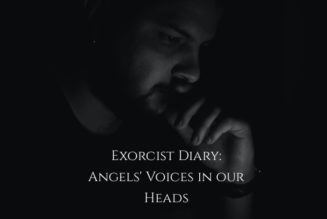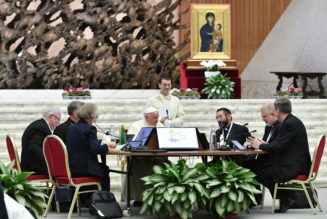By Phil Lawler ( bio – articles – email ) | Sep 04, 2024
Could we all please agree to stop using the adjective “vibrant” to describe a Catholic parish, diocese, or other faith community?
My desktop dictionary (admittedly an antique, Webster’s New Collegiate, published in 1974) defines “vibrant” as “oscillating or pulsating rapidly”—something that is ordinarily done by inanimate objects, not by human beings, let alone human communities. Granted, the connotation of the word has changed over time, so that today it is used as more or less synonymous with “energetic” or “vigorous.” But those familiar old words conjure up distinct mental images, whereas “vibrant” leaves things somewhat vague. If someone says that the walls of his room are painted in “vibrant” colors, you know what to expect; if he says that he lives in a “vibrant” neighborhood, you’re not so sure. For that very reason, I suspect, the word is often used by publicists who want to make something sound more exciting than it really is.
Is your parish or diocese oscillating or pulsating rapidly? No. Nor should it. So why is the word “vibrant” invoked with such mind-numbing frequency to describe Catholic communities?
Use the word “vigorous,” on the other hand, and the claim that can be tested against hard realities. A vigorous community will show clear signs of growth, of movement, even of muscularity. Is that true of your parish or diocese?
There is spiritual growth, and movement of the Holy Spirit, in any place where good people gather to pray. Amazing things are happening on a regular basis in every parish where the faithful receive the sacraments. But do the people of that parish believe that the Holy Spirit is moving powerfully among them? Do they act as if they believe?
Even a somnolent parish might have a solid cadre of very active, devout, even saintly people, doing their best to live and spread the Gospel message. Anyone looking for signs of vigor in the parish will find them. But it is a mistake to assume that these stalwart Catholics are representative of the parish as a whole. Are they leaders or outliers? Do the majority of parishioners admire and seek to emulate them, or do their best to ignore them? In judging the health of a parish, one is making a generalization. It would be wrong to base the judgment exclusively on the most pious parishioners—just as it would be wrong to focus on the most flagrant sinners.
The fundamental question, really, is the overall tenor of parish life. Yes, there are promising signs of spiritual health in every parish. But what is the dominant trend; what is state of spiritual health in the community? Bear in mind, too, that the people most enthusiastic about the faith are likely to be the ones most active in parish activities, most visible around the church and the rectory. But then at a retirement home, where a visitor is likely to encounter young nurses and aides in the corridor, it would be foolish to characterize the place as “youthful.”
We, as Christians, profess a faith that the truth shall set us free. We must be truthful—if necessary, brutally honest—about the condition of our Catholic communities. Avoid the language of the PR flacks. Face the facts. Don’t describe a parish as “vibrant” if there are no signs of movement.
Or worse—and, unfortunately, more likely—if there is movement, mostly out of the church. We cannot continue to ignore the steady stream of Catholics—especially young Catholics—leaving the faith. A vigorous parish should be growing, not shrinking; there should be more baptisms than funerals.
For too long, Church leaders have avoided confronting a serious crisis of faith, preferring instead to accentuate the positive, to put the best possible construction on the evidence. Look out over the pews, and see dozens of people with their eyes closed. Could they be deep in prayer? Absolutely! But there is another possible explanation for their closed eyes, and it is dangerous to ignore it.
Christian realism involves looking at problems with a steady gaze, keeping both eyes open, but without rose-colored glasses. We know that the Holy Spirit can work in mysterious ways, so that sometimes a powerful spiritual renewal occurs without any outward signs. It does not follow that if there are no outside signs, a powerful spiritual renewal is underway.
Sound Off! CatholicCulture.org supporters weigh in.
All comments are moderated. To lighten our editing burden, only current donors are allowed to Sound Off. If you are a current donor, log in to see the comment form; otherwise please support our work, and Sound Off!











